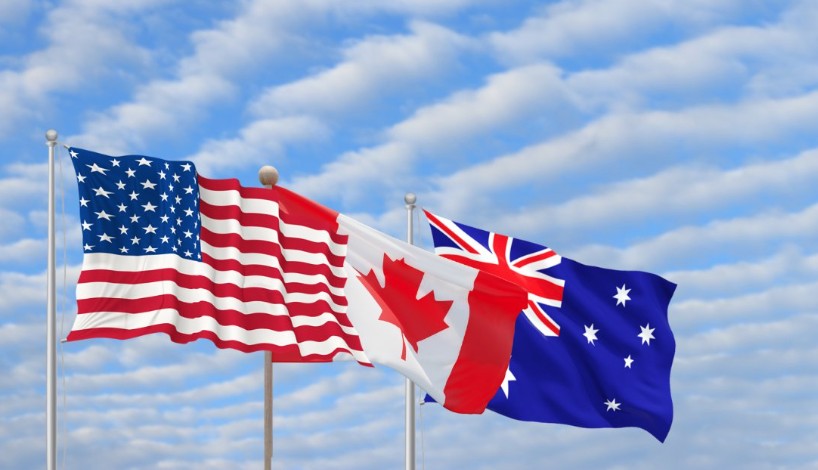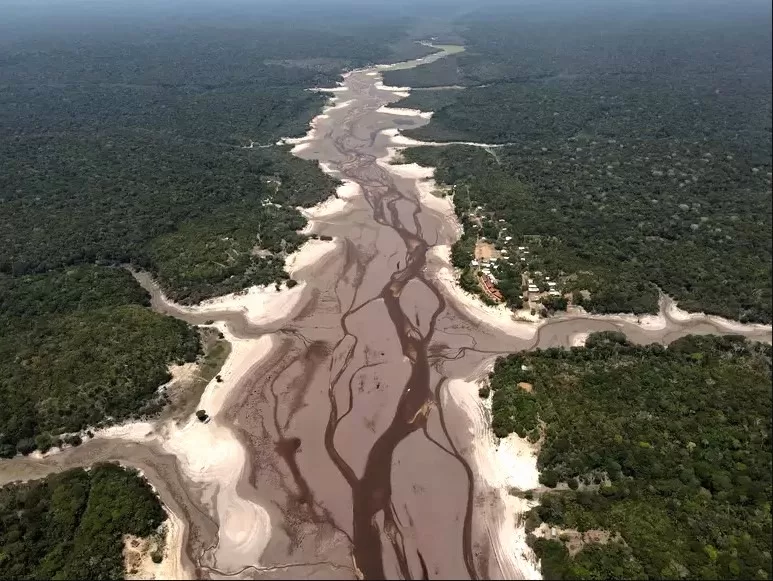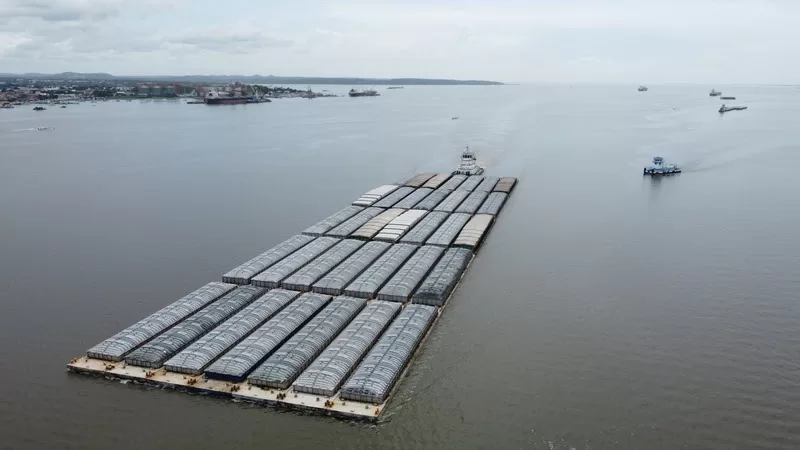
Visa exemptions for certain nationalities rei...
read more

Carriers and port facilities shift their logistics in Northern Brazil as drought-stricken inland waterways remain at their historically lowest levels
Drought in the Amazon basin is seasonal and reasonably predictable. Every year, rainfall deficit and low river levels impose substantial limitations on navigation and challenge riverside communities and businesses during the so-called “Amazon Summer”. However, aggravated by the El Niño phenomenon, this season has been particularly harsh, with water levels reaching unprecedented lows and causing severe socioeconomic and environmental consequences, as recently reported.
This year’s drought is hampering navigation in critical stretches, such as the mouth of the Madeira River, the confluence of the Solimões and Negro Rivers around Manaus, further downstream the Amazon River, nearby Itacoatiara, and along the Tapajos River, between Itaituba and Santarém, at the confluence with the Amazon River. Other stretches of navigable rivers also suffer from the arid weather.
Manaus is the largest city in the Amazon. It is home to the busiest container terminals in northern Brazil and the Manaus Free Trade Zone (ZFM), where consumer products are manufactured or assembled for distribution to the rest of the country through cabotage (coastal domestic navigation).
Given the ongoing drought, which has considerably reduced the operational draft and, therefore, the carrying capacity of ships, carriers have introduced a temporary Low Water Surcharge (LWS) applicable to all containers to or from Manaus.
Regardless of the LWS fee, operators that provide regular shipping and logistics services in the capital of Amazonas, such as ONE, Log-In, Mercosul Line (part of the CMA CGM Group), Aliança (A.P.Mollen-Maersk) and MSC, have suspended their scheduled calls at Manaus, as river waters reached critically low levels, compromising the manoeuvrability of ships.

Many of these operators have unloaded containers for Manaus in alternative ports, such as Vila do Conde, near Belém, and Pecém and Suape, on the northeast coast, for later transhipment when the normal navigability of the rivers is restored. Some carriers are shuttling containers piecemeal between Manaus and Vila do Conde terminals on barges or barge-truck combinations.
Agricultural products
The 2022/23 soya bean export season comes to an end after a bumper harvest, with only a few lagged shipments still waiting to depart Northern Arc river ports. As soya bean shipments slow and make way, maize exports pick up and are bound to reach record volumes.
As is expected at this time of year, and even more so amid the exceptionally intense drought, traders are routing their commodities through alternative ports, such as Itaqui in São Luís, Santos, Paranagua and Rio Grande. Ironically, persistent bad weather and above-average rains in the latter three southern ports delay loading operations, causing congestion at those ports and anchorages.
Since maize is not as biologically prone to mould and self-heating as oilseed, no significant issues are expected with this cereal being shipped from the Amazon other than longer-than-usual transit times and higher inland costs. Nevertheless, masters and crews must pay attention to the apparent condition of the grain during loading and immediately report any deviations to the shipowners and charterers.
Bauxite
Over 90% of Brazil’s operating bauxite mines are in Pará, in the eastern Amazon.
Regular shipments depart from the port terminal operated by Minerações Rio do Norte (MRN) on the right bank of the Trombetas River, which flows into the Amazon to the south. MRN is Brazil’s leading bauxite miner, shipping the ore extracted from the hinterlands of Pará on barges and bulk carriers down the Amazon for discharge at Vila do Conde to supply Hydro Alunorte alumina refinery in Barcarena or exported.
In Juruti on the Amazon River, aluminium-makers Alcoa runs a port terminal shipping bauxite mined from western Pará to the alumina and aluminium plant of Alumar in São Luis, Maranhão, and abroad.
Although Trombetas and Juruti bauxite terminals are operational in the dry season, until last week, both had sailing draft restrictions of around 8.80 m and 9.12 m, respectively, with the draft at the North Bar of the Amazon River remaining at 11.58 m.
Typically, barge convoys pushed by tugboats depart from cargo transhipment stations in Porto Velho, Rondônia, on the Madeira River, and Miritituba (Itaituba), Pará, on the Tapajos River. They are laden with mineral products and agriproducts, chiefly soya beans and maize (corn), which are transhipped to bulk terminals at Itacoatiara, Santarém, Santana (Macapá), and Vila do Conde. From there, the barges backhaul imports of fertilisers and other agricultural inputs upriver.
Due to the extremely shallow waters, the barges face a 50% drop in carrying capacity – in the last dry season, the payload reduction was less than 40%.

The maritime authority temporarily reduced the under-keel clearance (UKC) of convoys sailing along the Tapajós between Itaituba and Santarém to 5% of the pushers’ operational draft or 30 cm, whichever is greater.
Night navigation on the Madeira between Porto Velho and Uruá Passage was prohibited, with a UKC limited to one metre for convoys carrying dangerous or polluting goods and 0.50 m for others.
The hindering of cabotage navigation badly affects residents, who see a general rise in the price of products and services due to the scarcity of inputs and increased freight rates. Low river levels could also negatively impact the supply and distribution of goods manufactured at ZFM, especially for Brazil’s “Black Friday” and, ultimately, the Christmas shopping season.
To lessen the impact of the extreme drought, the National Waterway Transport Agency (ANTAQ) is streamlining procedures for chartering small ships for cabotage navigation to re-establish supply and trade in the Amazon region.
The federal government allocated resources for emergency dredging works in critical stretches of the Madeira and Solimões Rivers and the Tabocal Passage on the Amazon River near Itacoatiara.
Draft restrictions vary depending on the port facility. The current limitation in the North Bar of the Amazon River for ships departing from Manaus, Itacoatiara, Santarem, Juruti, Trombetas and Santana stands at 11.58 m. For those leaving Vila do Conde (Barcarena) and Belém through the Pará River via the Quiriri Channel, the limitation is 13.80 m.
As water levels change daily due to prolonged drought, ships calling the river ports should check prevailing draft limitations with their local agents and terminal operators before entering the Amazon.
Please read our disclaimer.
Related topics:
Rua Barão de Cotegipe, 443 - Sala 610 - 96200-290 - Rio Grande/RS - Brazil
Telephone +55 53 3233 1500
proinde.riogrande@proinde.com.br
Rua Itororó, 3 - 3rd floor
11010-071 - Santos, SP - Brazil
Telephone +55 13 4009 9550
proinde@proinde.com.br
Av. Rio Branco, 45 - sala 2402
20090-003 - Rio de Janeiro, RJ - Brazil
Telephone +55 21 2253 6145
proinde.rio@proinde.com.br
Rua Professor Elpidio Pimentel, 320 sala 401 - 29065-060 – Vitoria, ES – Brazil
Telephone: +55 27 3337 1178
proinde.vitoria@proinde.com.br
Rua Miguel Calmon, 19 - sala 702 - 40015-010 – Salvador, BA – Brazil
Telephone: +55 71 3242 3384
proinde.salvador@proinde.com.br
Av. Visconde de Jequitinhonha, 209 - sala 402 - 51021-190 - Recife, PE - Brazil
Telephone +55 81 3328 6414
proinde.recife@proinde.com.br
Rua Osvaldo Cruz, 01, Sala 1408
60125-150 – Fortaleza-CE – Brazil
Telephone +55 85 3099 4068
proinde.fortaleza@proinde.com.br
Tv. Joaquim Furtado, Quadra 314, Lote 01, Sala 206 - 68447-000 – Barcarena, PA – Brazil
Telephone +55 91 99393 4252
proinde.belem@proinde.com.br
Av. Dr. Theomario Pinto da Costa, 811 - sala 204 - 69050-055 - Manaus, AM - Brazil
Telephone +55 92 3307-0653
proinde.manaus@proinde.com.br
Rua dos Azulões, Sala 111 - Edifício Office Tower - 65075-060 - São Luis, MA - Brazil
Telephone +55 98 99101-2939
proinde.belem@proinde.com.br